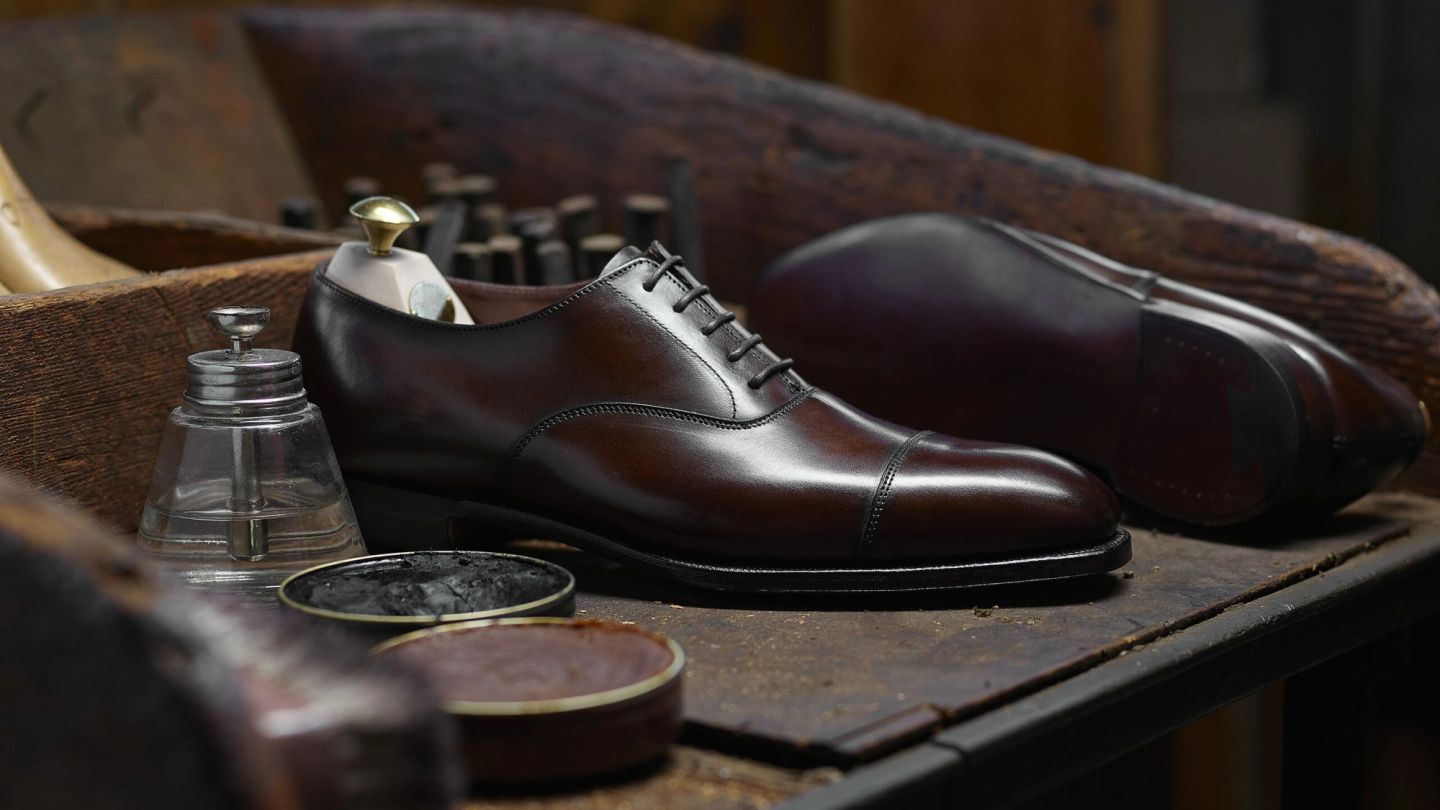

The gentleman’s guide to buying the perfect shoe
Turn to Crockett & Jones for the best tips and tricks to pick the perfect pair
Words: Gentleman's Journal
A fine new pair of leather shoes is not an investment you should approach lightly. These are shoes that’ll be with you for years, see you through thick and thin, run for cabs and tubes and take you from home to work and back again day after day, week after week. So how do you pick the perfect pair?
We turn to James Fox, Marketing Manager of Northampton-based heritage shoemakers Crockett & Jones, to educate us on what exactly to look out for when buying a new pair of leather shoes, and what to avoid…
Inspect the upper for quality of leather
Leather, Fox tells us, comes in all forms and qualities. Given that most customers will focus on the upper, or outer leather, here are the expert’s tips.
What to look for: It is not easy for the untrained eye to distinguish between the finer margins when reaching the best of the best, and trust me when I say – price is not always an indicator of quality. The basic rules are; top grade calf skins should be clean – without growth or blemished such as scars or bites – and have a tight break and creasing.
A tight break also means the fibre structure is good – the handle, as we say – with minute hair follicles. A combination that enables us at Crockett & Jones to finish the shoes to a high standard. Calf skins tend to come from bovines that are 2 – 4 months in age – and all skins are a by-product of the meat market. An example of these fine skins can be seen in our Hand Finished, Hand Grade Collection. The skins are as good as you can find, anywhere in the world and will age beautifully.
Check the soles for material and composition
What to look for: In leather soles, quality is down to a lot more than just thickness. High quality leather soles should be cut from leather bends that have been tanned over long periods of time (9 – 12 months). Leather bends are half of a Leather hide (a hide is a larger skin of a slightly older bovine than say a Calf Skin that is used for the uppers). These hides are cut down the backbone to produce a leather ‘Bend’. The quality of a bend depends on the quality of the raw material and tannage. A good tannage results in a strong fibre structure that will wear evenly and well, over a longer period of time.
With rubber, where Crockett & Jones’ new ‘City’ rubber sole become relevant, we have developed a sharp rubber sole, with the side profile of a smarter leather sole. Not only does it extend the life of the sole, it increases flexibility, aids with shock absorbency and makes for a high traction sole when walking the cobbled streets of London and the death defying escalators that adorn our century old underground! A real life saver – and just what you need to look for in a rubber sole.
"Leather board is the leather equivalent of MDF. Shredded and pulped leather, regurgitated to produce a semi man-made leather board that is efficient to cut and cheap to produce..."
What to avoid: Lower quality footwear will use ‘Leather Board’. Leather board is the leather equivalent of MDF. Shredded and pulped leather, regurgitated to produce a semi man-made leather board that is efficient to cut and cheap to produce. The problem with leather board is there is no natural fibre structure remaining to ensure the integrity of the material remains of a high quality.
That being said, if you wear your quality leather soles regularly in the rain without rotation and dry them aggressively, even a leather sole will wear through quickly. Sole wear is much like a car tire – the more mileage you do, the quicker it will wear…
Once you’ve checked the materials, move onto the construction
What to look for: High quality footwear is an investment, so they should first and foremost fit like a glove. Last development is completely unseen and to a larger extent unappreciated. Most people will think that a last just gives you the toe shape, but a poorly developed last by someone who does not know about last making, will never result in an excellent fitting shoe. Here at Crockett & Jones, we put a huge amount of time and effort into our lasts, whilst learning from over a century of shoemaking. We even develop lasts for specific markets, feet are dramatically different in Asia to the US.
In terms of Goodyear-welted construction, there is no doubt that this method produces a high quality, repairable and durable shoe, but to a certain extent, you have to trust your maker and the price point that they put on their product. Look for an excellent fitting last, consistency of quality and design, longevity of a particular style or collection and the level of customer service that should always come with purchasing quality shoes.
What to avoid: I can always tell a maker apart from their sole finishing and the aesthetic details used to embellish them. To be a high quality finisher, you have to have skilled staff in your finishing department. Ultimately, the signature of a shoemaker is the fit and look of their lasts.
Every maker also has small details that might be unique to them such as medallion designs on brogues and semi-brogues, heel finishing and the quality of the heels themselves, accuracy of closing, patterns details and quirks. These are the main things to look out for, but in reality the list is almost endless…
Want to know more about the heritage shoemakers? Go behind the brand with Crockett & Jones here


